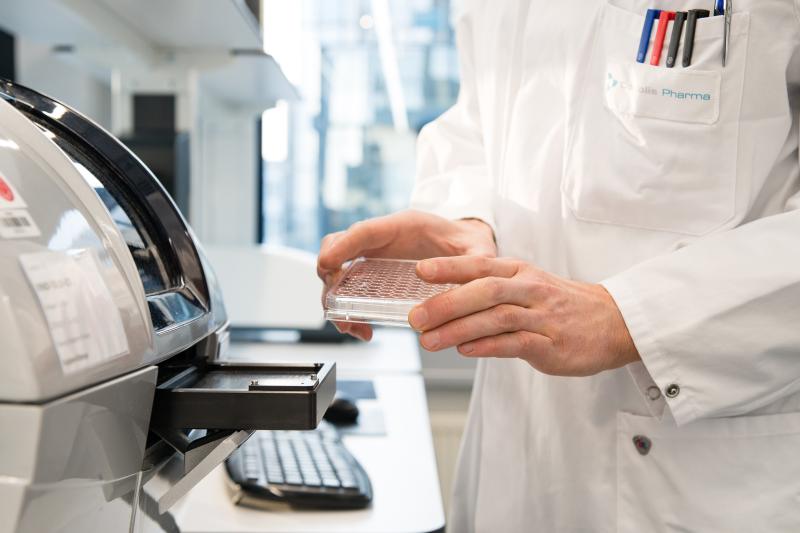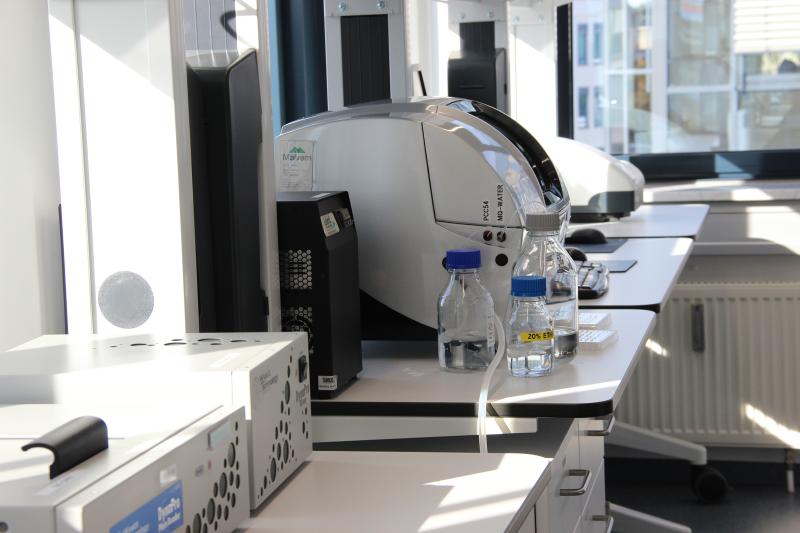Dynamic light scattering (DLS)
Determine the Hydrodynamic Size of Molecules or Particles with DLS

Dynamic light scattering (DLS) is a non-invasive, quick and robust technique to determine the hydrodynamic size of molecules or particles. Based on intensity fluctuations of laser light scattered by the molecules/particles, moving in Brownian motion, the diffusion coefficient is determined and converted to particle size via the Stokes-Einstein equation. DLS can determine the hydrodynamic size of protein monomers, small aggregates in the nanometer range and partially also particles in the high nanometer/low micrometer range. The technique can also be employed for the analysis of colloidal systems, such as liposomes, nanoparticles, polymers and virus-like particles.
The particle size range of DLS depends on the properties of the analyzed species, such as refractive index or density, as well as the surrounding formulation, mainly the viscosity. For protein monomers and aggregates, a size range from about 1 nm to several µm can be covered. Particle concentrations cannot be obtained by DLS. For aggregated protein samples, DLS results can show that the aggregate distribution in the sample is polydisperse, but it is not feasible to obtain detailed quantitative information on monomer and aggregate content.
Quality and Biosafety Level
We provide all our analytical services with the highest quality standards. Each project is carried out by experienced scientists and every report or data presentation is comprehensively checked by a scientific reviewer. We offer this technology with the following quality and biosafety level:

DLS is mainly used as a research tool during formulation development and to generate supportive data on formulation purity (mainly with respect to aggregate and particle content) for comparability exercises or stability studies.
Because of its high sensitivity to detect minute amounts of aggregates and the possibility to measure small sample volumes (e.g., using plate readers), DLS is a suitable technique for (formulation) screening purposes. Another quantity that DLS can deliver is the interaction parameter (kd) derived from the determination of the diffusion coefficient, which can be a surrogate for the second virial coefficient (B22). The kd can be used to predict the colloidal stability of a protein, which may impact the aggregation propensity of a protein within a formulation.
Standardized methods or dedicated method development
For common sample types, we can often apply standardized methods with little setup effort. On top of this, our experienced analytical scientists perform in-depth method development or method optimization tailored to your drug substance, product type and development phase.
Method development
During method development, we tailor sample preparation, method settings, and data analysis to the needs of your project and sample.
For this purpose, we include a representative sample and, where available, suitable reference standards and stressed/degraded materials. This way, our analytical scientists can design a method that is highly suitable for your needs, stability indicating, as well as robust and repeatable. Upon request, we compile a detailed method description for your records.
This can be applied under R&D. Read more
Method qualification
A method qualification is the initial assessment of the performance of an analytical procedure to show that it is suitable for the intended purpose.
During method qualification, our analytical scientists perform a documented testing that demonstrates that the analytical procedure meets certain acceptance criteria in several categories. These may include repeatability, linearity, intermediate precision, robustness and more. We compile a qualification plan and a qualification report including all relevant data.
This can be applied under R&D. Read more
Contact us
Contact us
Any questions left? Please contact Dr. Jörg Müller!
Phone: +49 89 41 77 60 – 111
Mail: joerg.mueller@coriolis-pharma.com


